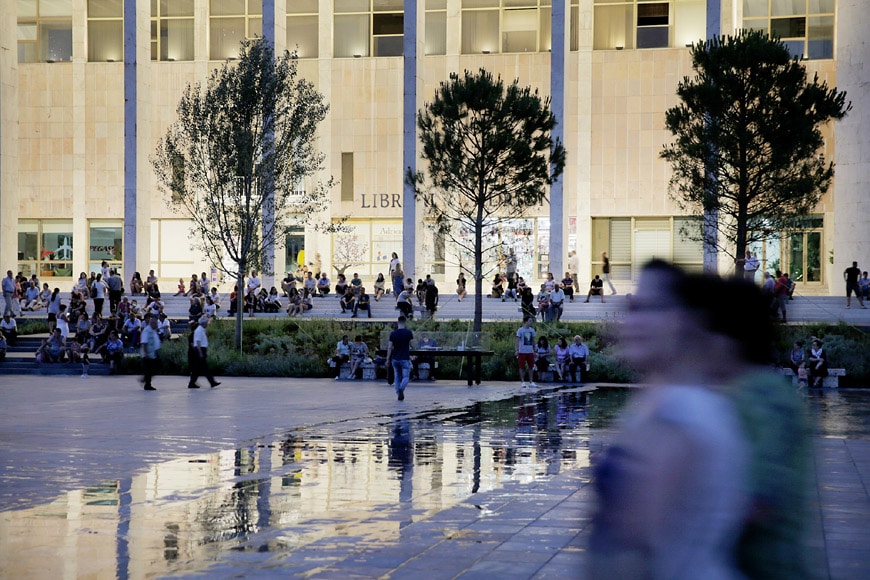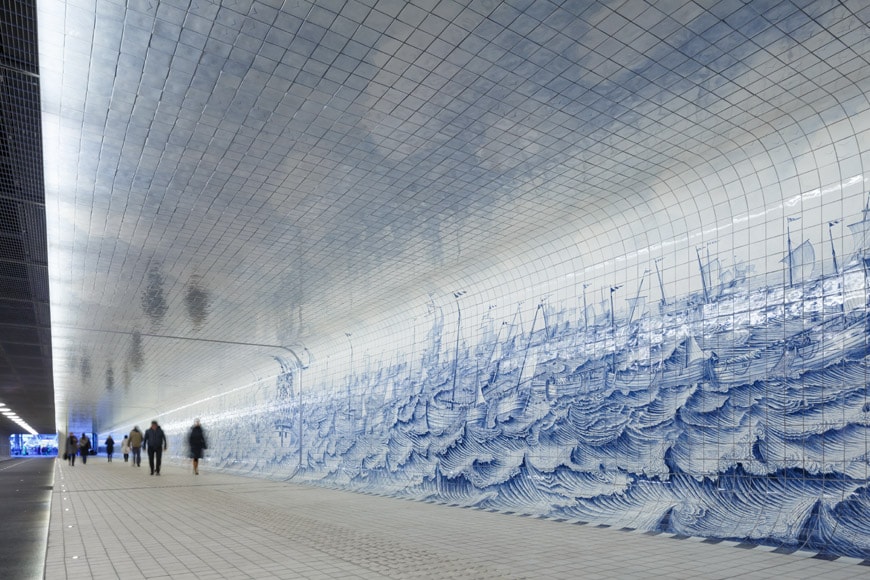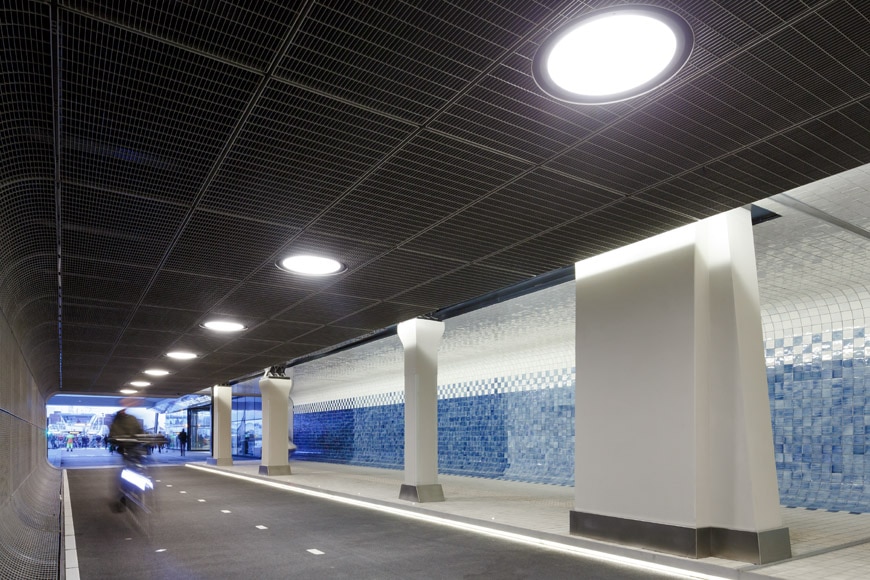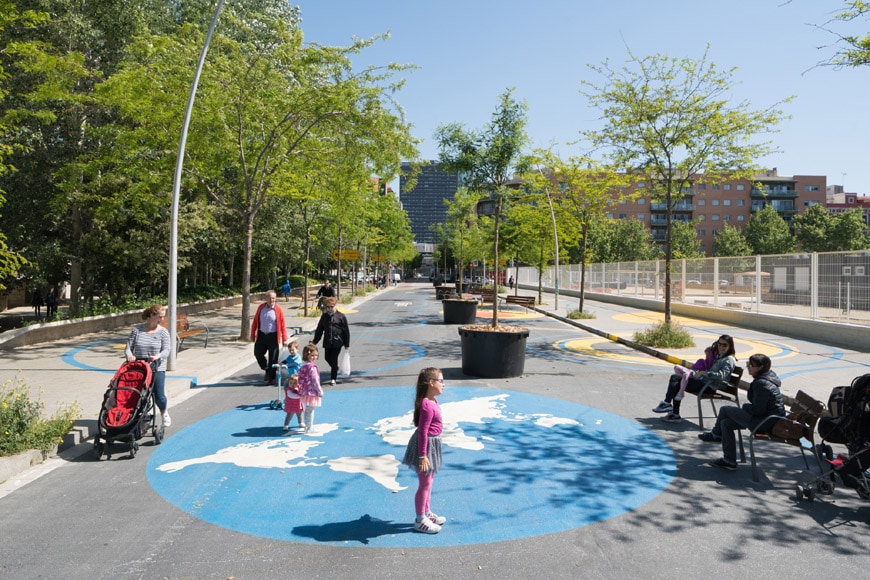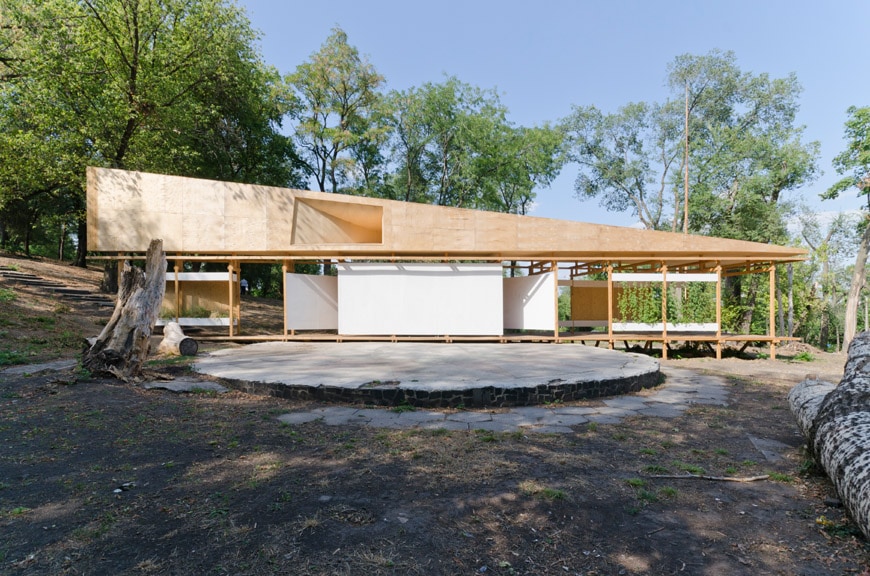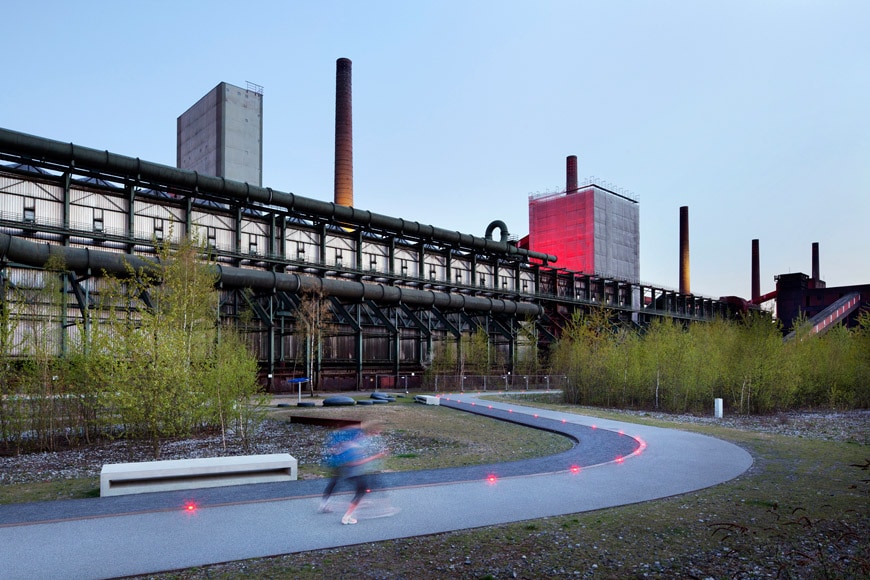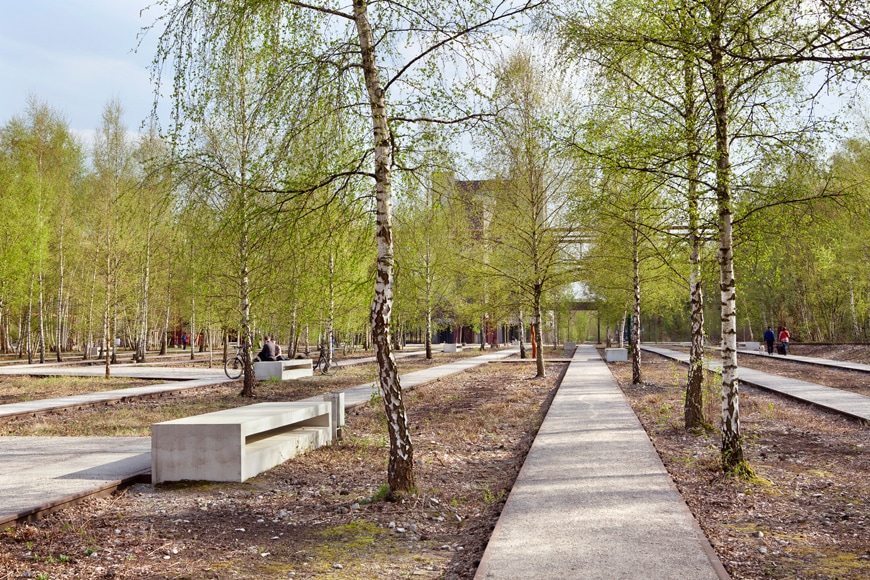The Winners of the 2018 European Prize for Urban Public Space
The Winners of the 2018 European Prize for Urban Public Space
The international jury of the European for Urban Public Space has announced the awarded designs for this year’s edition. Representing the best public space interventions in European cities in 2016 and 2017, these works were selected among 279 candidates from 32 countries.
The European Prize for Urban Public Space is a biennial award promoted by the Centre of
Contemporary Culture of Barcelona (CCCB) which, following its exhibition “The Reconquest
of Europe” (1999), decided to establish a permanent observatory of European cities.
From its inception, the Prize has been aimed to recognize and promote the best works focused on public space renovation in Europe. Well aware of the ambiguities inherent in the notion of public space, this is the only prize in Europe that recognizes spaces that are both public (open and of universal access) and urban. The Prize is therefore different from other initiatives focused on the figure of the architect, as well as from awards given for landscaping projects since it draws attention to the relational and civic nature of the urban space.
The President of the 2018 Jury was OLGA TARRASÓ, an architect with a master’s degree in landscape design from the Universitat Politècnica de Catalunya (UPC). She has combined her work with teaching and has lectured in schools of architecture, agricultural engineering, and design in several European countries.
WINNER
Renovation of Skanderbeg Square – Tirana
Author: 51N4E
Developer: Bashkia Tiranë (City Council) Tirana
Surface: 97.344 m2 | Cost: 13.000.000€
Dates start/end: 2008/2017
The renovation has transformed the Skanderbeg square into a pedestrian zone of more than ten hectares, the largest such area in the Balkans. Rather than flat ground, the square takes the form of a pyramid with a maximum height of two meters. A fountain at the top trickles water down the sides, thus bringing out the colors of the mosaic paving which is made from stones from all over Albania. Twelve leafy gardens of indigenous plants equipped with pieces of movable street furniture to be used by people as they see fit form a green belt around the perimeter. The types and uses of these gardens were determined in a series of workshops and meetings with the inhabitants and owners of the adjacent buildings.
51N4E, Renovation of Skanderbeg Square, Tirana, photos Filip Dujardin.
51N4E, Renovation of Skanderbeg Square, Tirana.
Above and cover image: photos Blerta Cambo.
MENTION
Cuypers Passage – Amsterdam
Author: Benthem Crouwel Architects
Developer: Gemeente Amsterdam (City Council), Dienst Infrastructuur Verkeer en
Vervoer (Infrastructure and Mobility Service), Amsterdam
Surface: 1.150 m2 | Cost: 11.900.000€
Dates start/end: 2008/2016
This project by Benthem Crouwel Architects is part of a major transformation of the Central Railway Station of Amsterdam. A new tunnel for pedestrians and bicycles was built on the north edge of the site to connect it with the ferry terminal. Since crowd management in and around the station had become a problem, the new tunnel has been aimed to encourage the use of bicycles. Traditional blue and white tiles, giving a domestic touch, line the wall on the pedestrian side thus emphasizing the black track reserved for bicycles.
Benthem Crouwel Architects, Amsterdam, Amsterdam Central Station; Cuypers Passage, photos Irma Boom.
MENTION
Poblenou «Superblock» – Barcelona
Author and Developer: Ecology, Urbanism and Mobility Department, Barcelona City
Council.
Surface: 43.611 m2 | Cost: 1.484.560€
Dates start/end: 2016/2017
This project is a first step in “tactical urbanism”, and part of a broader strategy that embraces the whole city of Barcelona. Conceived as a blueprint, more than a finished design, the project is based on the idea that a street is not just an infrastructure for mobility but a place of social interaction. The goal is to subtract space from vehicular traffic to make room for buses, bicycles, and pedestrians and show that streets can be reclaimed for daily life. It is a social and environmental action, rather inexpensive as it prioritizes reorganization and reuse over the addition of new materials and structures.
Though somewhat controversial, this project has brought to light important questions related to traffic pollution, as well as to the use of public space.
Ecology, Urbanism and Mobility Department, Barcelona City Council, Poblenou «Superblock»
MENTION
Stage – Dnipro
Author: STAGE СЦЕНА community
Developer: NGO Kultura Medialna and citizens of Dnipro (Ukraine)
Surface: 3.500 m2 | Cost: 7.300€
Dates start/end: 2017/2017
The Taras Shevchenko Culture and Leisure Park is a “green lung” close to the heart of the city of Dnipro. On its grounds, a semicircular hollow testifies the previous existence of a 1930s amphitheater. The temporary stage built on the site is the result of a collaboration between several people of different local associations and NGOs, who have worked together on the development of this public project. Financed by crowdfunding, this new space created by the community has become a venue for many activities.
STAGE СЦЕНА community, Stage – Dnipro, photos Alexandr Burlaka.
STAGE СЦЕНА community, Stage – Dnipro, photo Olena Kasperovich.
MENTION
Zollverein Park – Essen
Author: Planergruppe GmbH Oberhausen
Developer: Stiftung Zollverein
Essen (Germany)
Surface: 800.000 m2 | Cost: 14.500.000€
Dates start/end: 2005/2018
This new park in Essen, created on a UNESCO World Heritage Site, features disused industrial buildings, dating back to the 1920s, and old coal mines.
The park, which had been under construction for more than twenty years, has been recently opened as the plants have grown enough. The most interesting aspect of this large regeneration project is its unique combination of landscaping and buildings which testify to the industrial past of the place. Some of the buildings have been renovated to accommodate cultural programs, while the redesigned outdoor area includes cycle lanes, ice skating rinks, and other amenities. Hence, by combining an internationally recognized heritage site with everyday activities, this project – rather than trying to “domesticate” the wild nature of a place that had been closed for years – has been capable of successfully integrating it with the rudeness and visual strength of its historical industrial architecture.
Planergruppe GmbH Oberhausen, Zollverein Park – Essen, photo Hans Blossey.
Planergruppe GmbH Oberhausen, Zollverein Park – Essen, Track boulevard, bird’s eye view, photo Jochen Tack.
Planergruppe GmbH Oberhausen, Zollverein Park – Essen, ringpromenade, photo Claudia Dreye.
Planergruppe GmbH Oberhausen, Zollverein Park – Essen, Track boulevard, photo Claudia Dreye.
MENTION
PC Caritas – Melle
Author: architecten de vylder vinck taillieu and BAVO
Developer: KARUS
Melle (Belgium)
Surface: 1.800 m2 | Cost: 475.000€
Dates start/end: 2015/2016
Since it was opened to the public, this new space that embraces the buildings of a psychiatric hospital and its grounds, allows medical staff, patients, visitors, and passers-by to meet and join together. Its public and social objective is to encourage contact with “others” by allowing exchanges in an unusual, original way; thus, closed buildings have been converted into parts of an open project, rather than the reverse. This space, demarcated by many thresholds, is made up of three elements: buildings, general structure, and park. Its blurred boundaries provide a sense of relaxation. The project has been a success, despite the idea of including a psychiatric center as part of a public space proved to be a difficult task, both in technical and social terms, to cope with.
architecten de vylder vinck taillieu and BAVO, PC Caritas – Melle, photos Filip Dujardin
copyright Inexhibit 2024 - ISSN: 2283-5474

